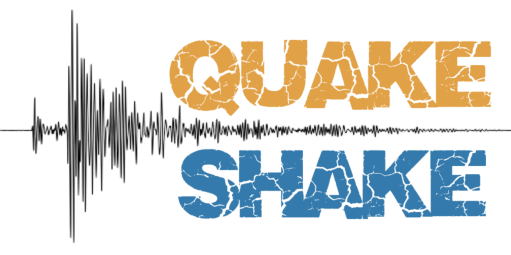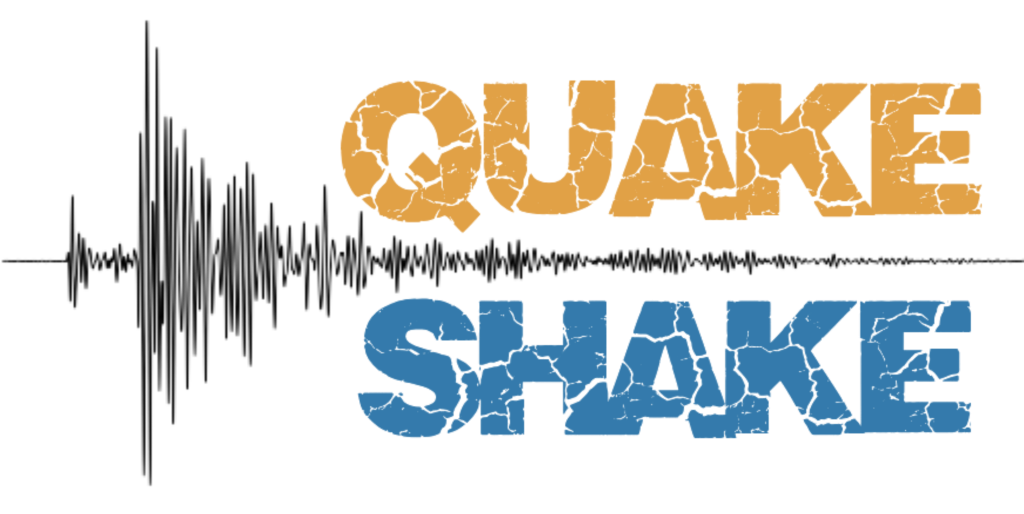About Earthquakes
Earthquakes occur all over the world every day, not only along the edge of plate boundaries but also in the middle of plates. Earthquakes occur along geological faults. These are fractures or zones of weakness in the Earth’s crust where rocks on either side have moved relative to each other. These movements are a result of tectonic forces acting on the Earth’s crust, causing the rocks to deform and sometimes slip along these fault lines. Geological faults can vary in length from a few metres to hundreds of kilometres and can result in various magnitudes of earthquakes when the accumulated stress is released through sudden movements along the fault plane. The study of faults is crucial for understanding earthquake hazards, the formation of mountains, and the overall dynamics of the Earth’s crust.
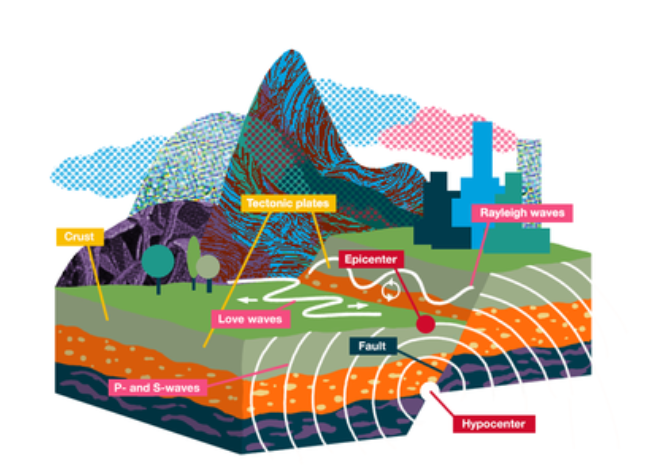
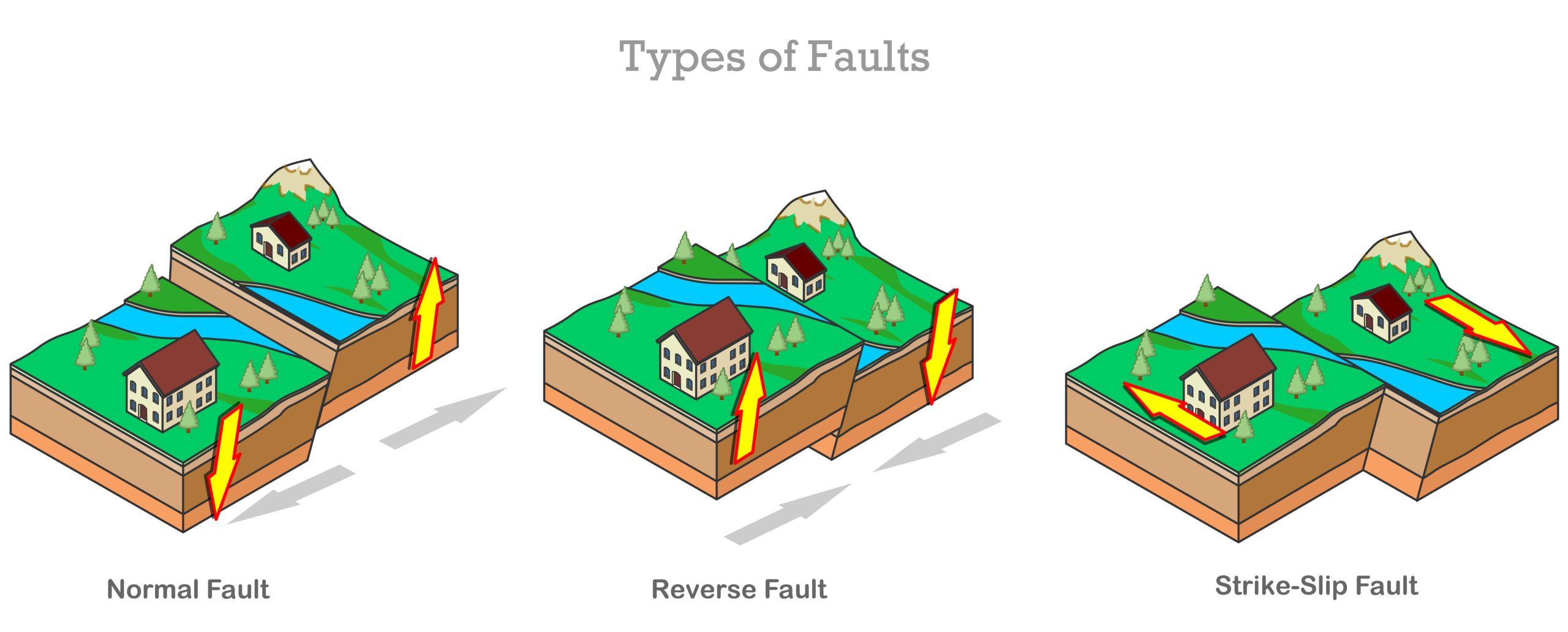
Faults
Fault- Faults are fractures in the Earth where rocks break and the movement along such a fault plane can manifest as an earthquake. This is a zone of weakness in the Earth's crust. The main types of faults are:
- Normal faults (caused by tensional forces)
- Reverse faults (caused by compressional forces)
- Strike-Slip faults (caused by horizontal shearing forces).
The type of fault determines the nature of the fault movement and the resulting seismic waves
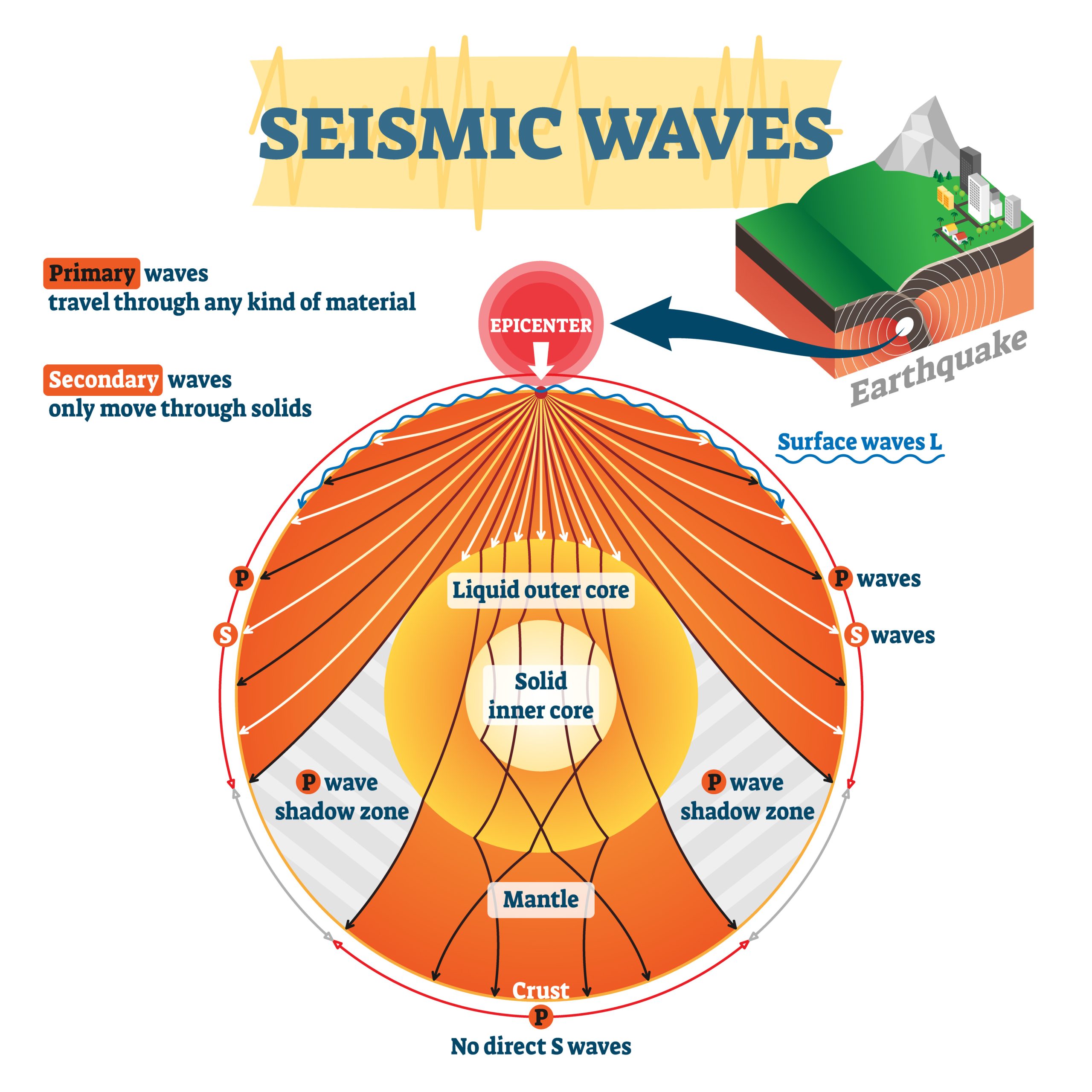
Focus/Hypocenter
This is the point within the Earth where the seismic energy is released. It's the actual location where the fault slip occurs, generating the seismic waves that radiate outwards and spread out in all directions, traveling through the Earth's interior until they reach the surface. The depth of the focus varies and controls the level of shaking on the ground, the shallower the focus the more intense the level of shaking and vice versa for a deeper focus.
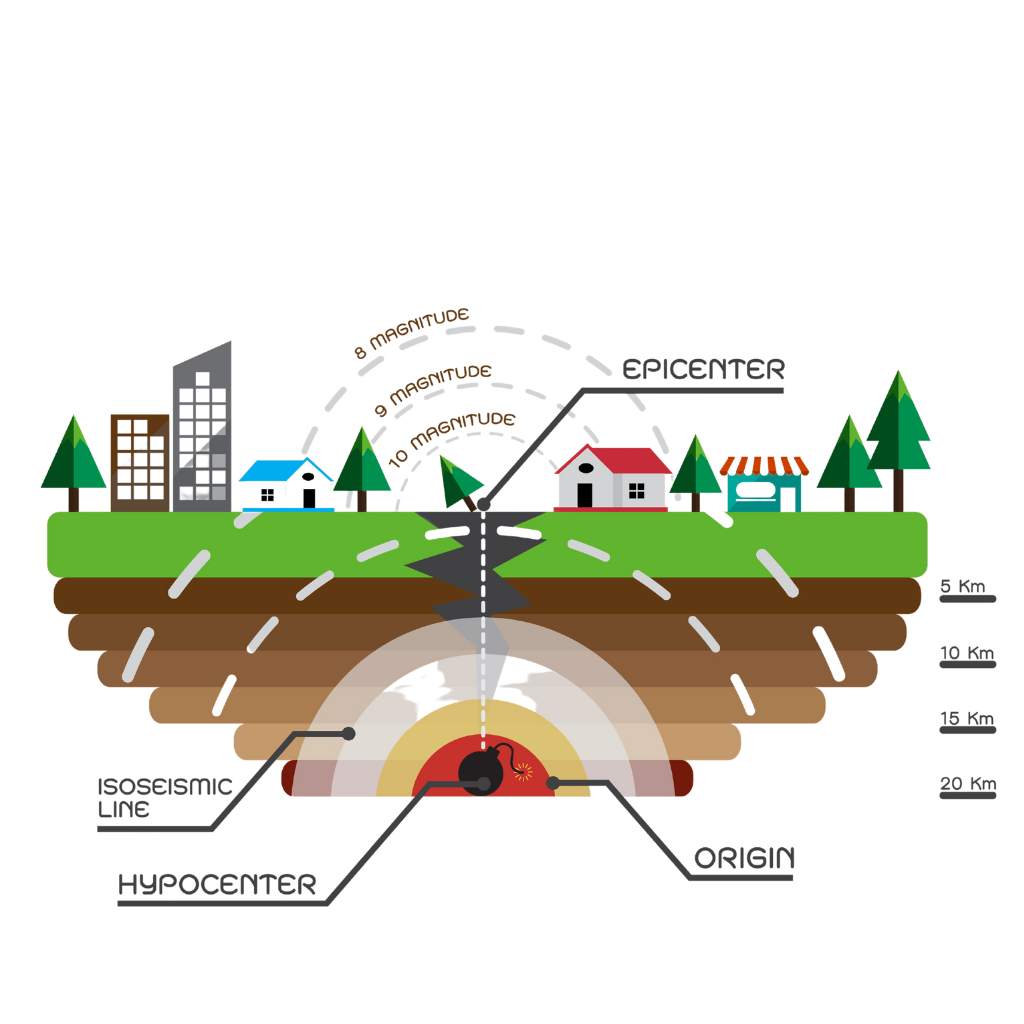
Epicenter
Epicenter- This is the point on the Earth’s surface directly above the earthquakes focus, or hypocenter. The epicenter is the location of the most intense shaking during an earthquake. Seismic stations around the world record the arrival times of the seismic waves, and by analysing the time differences, seismologists can triangulate the location of the epicenter.
How are Earthquakes Detected?
A seismometer is an instrument used to detect and record ground movements caused by seismic waves, such as those generated by earthquakes or other geological activities. They function based on the principle of inertia. When the ground shakes due to seismic waves, the mass of the seismometer remains relatively stationary (due to its inertia), while the frame or base moves with the ground motion. This ground motion can be measured and recorded. A seismograph refers to the combination of a seismometer with a recording device. A seismogram is the output or visual representation of the data captured by the seismometer over a specific period. They are a graphical representation of the ground motion recorded by a seismometer during an earthquake or any other seismic event. Seismograms display a lot of important and useful information to seismologists. They display a series of “wiggly lines” which are the seismic waves, time and amplitude.
Information Displayed in Seismographs

Time
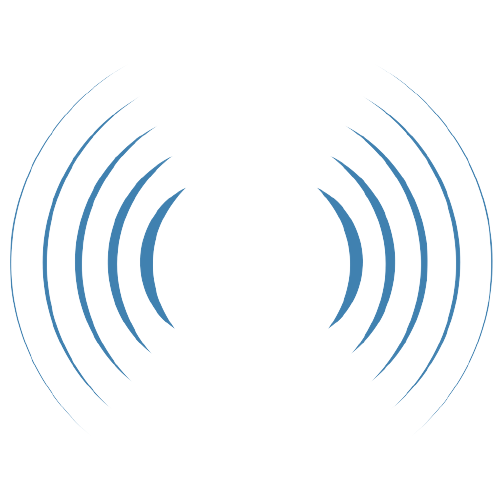
Amplitude

P-waves, S-waves, and Surface Waves

Arrival Times
Donegal Earthquake
See an example of a seismogram of the Irish Donegal magnitude 2.5 Earthquake from a Raspberry Shake seismometer in Ireland. You can see the P and S waves labelled in blue.
Seismologists analyse seismograms to study the characteristics of seismic events, locate their epicenter, determine earthquake magnitudes, and understand the Earth’s internal structure and tectonic processes.
Would you like to become a seismologist and find where this Irish Earthquake is located? Click here.
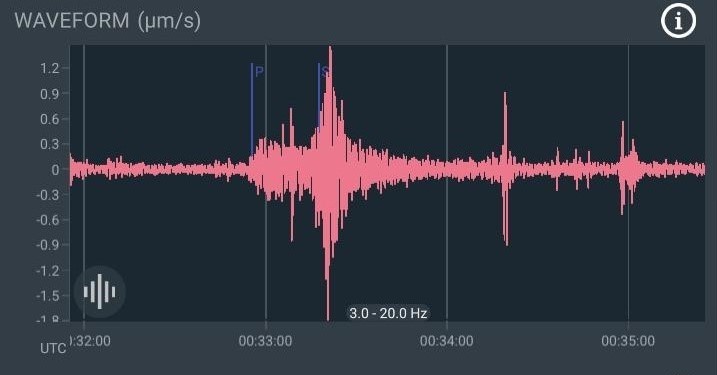
Different Types of Seismic Waves
Seismic waves can be broadly categorised into two main types: body waves and surface waves. The primary differences between these two types lie in their propagation paths and the regions of the Earth through which they travel.
Body Waves
P-Waves
Primary or Compressional Waves
S-Waves
Secondary or Shear Waves
Surface Waves
Rayleigh Waves
Love Waves
In summary, body waves (P-waves and S-waves) travel through the Earth’s interior, penetrating its various layers, while surface waves (Love waves and Rayleigh waves) travel along the Earth’s surface.
Earths Internal Composition
The discovery of a liquid outer core of the Earth is attributed to the study of seismic secondary wave arrivals. This technique is called Seismic Tomography. When seismic waves, specifically secondary or shear (S) waves, travel through the Earth’s interior, scientists observed an unexpected absence of S-waves in certain regions beneath the Earth’s surface. This observation led to the inference that these regions must contain a molten or liquid layer, as S-waves cannot propagate through liquids. As primary (P) waves were still detected in these regions, it was deduced that the outer core of the Earth is molten, allowing P-waves to travel through it. This ground breaking insight into the behaviour of seismic waves not only revealed the existence of a liquid outer core but also provided crucial evidence supporting the existence of a solid inner core, surrounded by the molten outer core.
Seismic Tomography utilises the way seismic waves travel through the Earth’s interior to create detailed images of its various layers.
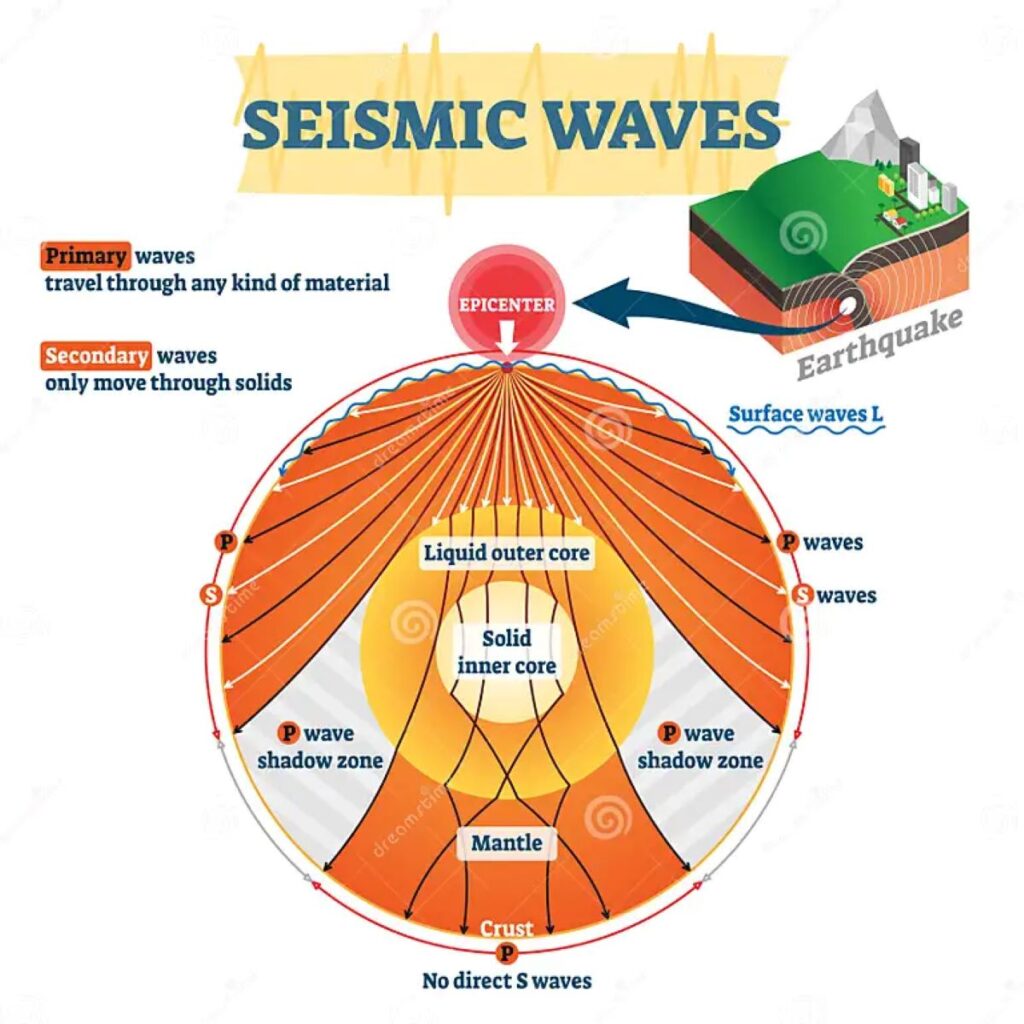
How are Earthquakes Measured?
Magnitude
Intensity
What are Richter, Local and Moment Magnitudes?
The magnitude of an earthquake is a measure of the “size” or strength of an earthquake. For smaller earthquakes, we use the Richter magnitude scale, developed by Charles Richter in California in the 1930s. This scale is also known as the Local Magnitude Scale, as it is intended to be used at distances less than 600km from an epicentre of an earthquake. The Richter scale magnitude for an earthquake (written as ML) is determined by measuring the maximum amplitude on a seismogram caused by an earthquake. The Richter scale is logarithmic – an increase in magnitude from 1 to 2 corresponds to ten-fold increase in amplitude measured on a seismogram. Although Richter’s scale was originally based on data from southern California, the Richter scale can be calibrated for any specific region worldwide in order to take into consideration the local effects of spreading and attenuation of seismic waves.
However, for large earthquakes, the Richter scale (as do other types of amplitude based scales) suffers from magnitude saturation. This means that very large earthquakes all seem to have the same magnitude past a certain value, usually between magnitude 6 to 7. This is due to the fact that Richter’s scale was based on measurements using an instrument known as a Woods-Anderson seismometer. Such a seismometer was not able to resolve the very low frequency seismic waves produced by great earthquakes. Other magnitude scales (such as MS – surface-wave magnitude) that measure amplitudes of seismic waves at specific frequencies also tend to saturate. As a result, an energy-based earthquake magnitude scale, MW, also known as the Moment Magnitude, was developed to overcome the issue of saturation. This scale uses the area of the rupture along a geological fault and the average offset in displacement (slip) between two sides of the fault. This scale also measures the energy released in an earthquake, and is not prone to saturation. As a result, the moment magnitude scale is considered the “definitive” magnitude scale for measuring an earthquake’s strength and size. However, it is significantly more complicated to determine the moment magnitude for an earthquake rather can calculating the Richter magnitude. Hence, Richter magnitudes are still commonly used to this day, usually for magnitudes less than 4.
Why Do Earthquakes Sometimes Have a Negative Magnitude?
Magnitude calculations are based on a logarithmic scale, so a ten-fold drop in amplitude decreases the magnitude by 1.
If an amplitude of 1 millimetre as measured on a seismometer at a distance of 100km from the epicentre of an earthquake corresponds to a magnitude 3 earthquake, then:
– 10 times less (0.1 millimetres) corresponds to a magnitude of 2;
– 100 times less (0.01 millimetres) corresponds to magnitude 1;
– 1,000 times less (0.001 millimetres) corresponds to magnitude 0.
– 10,000 times less (0.0001 millimetres) corresponds to magnitude -1.
